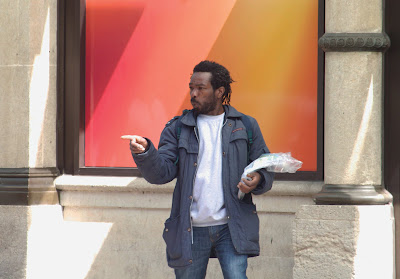
London Book

Leeds Book
I decided to go with a different name rather than New British Patriotism. Instead I decided to call both books 'A Tale of Two Cities'. The change was mainly down to the change and shift in the project itself and what I was taking photographs of and why. Originally the project was very much focused around race and multiculturalism and looking to push a sense of a new sense of patriotism that encompasses everyone who call the UK their home. I drifted away from this idea slightly and i wanted a more general title that showed that it was more a journey through two different cities. There are also the connotations that arise through the use of using the same name as the famous Charles Dickens novel. the following quote is from wikipedia that quickly describes the book:
A Tale of Two Cities 'depicts the plight of the French peasantry demoralized by the French aristocracy in the years leading up to the revolution, the corresponding brutality demonstrated by the revolutionaries toward the former aristocrats in the early years of the revolution, and many unflattering social parallels with life in London during the same time period. It follows the lives of several protagonists through these events, most notably Charles Darnay, a French once-aristocrat who falls victim to the indiscriminate wrath of the revolution despite his virtuous nature, and Sydney Carton, a dissipated British barrister who endeavours to redeem his ill-spent life out of love for Darnay's wife, Lucie Manette.'
I think the fact that I became interested in class throughout the project reflects well with the use of the title and what Dickens was trying to portray within his novel.
I also decided to stick with the cover design that used the text over the top of one of the photos. I always knew that I wanted to use the photo of the closed down African Community Link project for my London title page as I thought it was a strong image and raised questions about multiculturalism with in a community. I then managed to find a shop front in Leeds that had a painted Ghana flag on the front and thought the contrast between an open shop and a closed community project was interesting. I also decided to make the text smaller and tried to used the plain space in both images to place it.



























